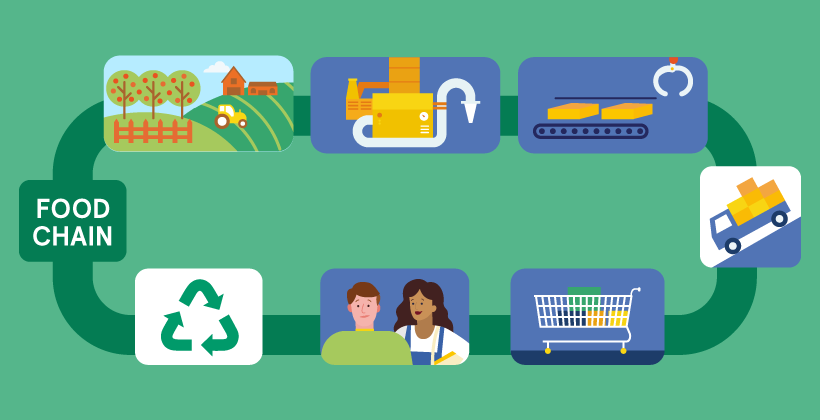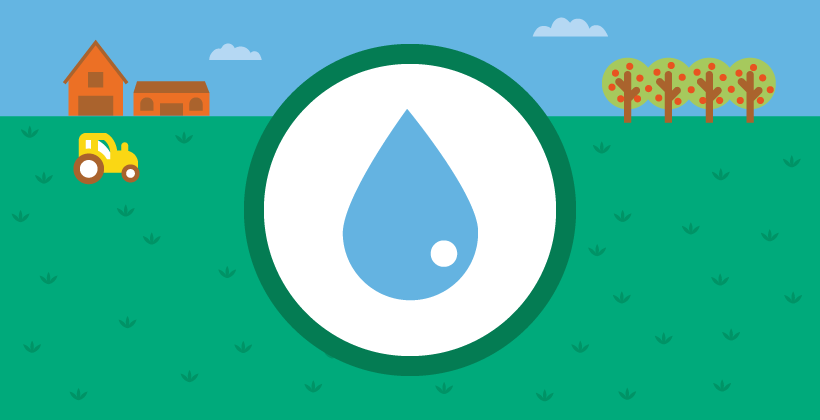What are food safety risk assessments and why are they used?
Last Updated : 05 June 2019Food safety affects us all, and in our daily lives we naturally want to avoid food that puts our health at risk. Who evaluates what is safe to eat and what is not? What are their decisions based upon? An explanation can be found by having a closer look at risk assessment processes. A risk assessment of a food or ingredient includes hazard identification and characterisation, exposure assessment and risk characterisation. This leads up to a decision on whether any legal measures should be taken in order to prevent harm by this food or ingredient.
The network of food safety organisations
Food safety organisations evaluate continuously whether new or already existing food is safe to eat. They may evaluate whole food groups, such as processed meat, or food ingredients, such as individual additives. These organisations can be global, like Codex Alimentarius and Joint FAO/WHO Expert Committee on Food Additives (JECFA). Some organisations are regional, like the European Food Safety Authority (EFSA), and some are national, like the French Agence nationale de sécurité sanitaire de l’alimentation, de l’environnement et du travail (ANSES) and the German Bundesinstitut für Risikobewertung (BfR). Together, they form a worldwide network committed to keeping us healthy and safe.
What is the difference between risk assessors and risk managers?
In the safety evaluation of food there is a distinction between risk assessors and risk managers. Risk assessors are organisations that evaluate the potential harmfulness of a food or ingredient. JEFCA and EFSA, for example, are risk assessors. In Europe, risk assessors cooperate with risk managers (e.g. European Commission, Member States and the European Parliament), that set the legislation around the evaluated food or ingredient. In short, risk assessors review the available scientific data on the safety of a specific food or ingredient and provide information or recommendations to the risk managers. The risk managers finally decide whether any legal measures should be put in place (e.g. approving or restricting certain ingredients from the market).1
How does this work in practice?
A risk manager, for example the European Commission, a Member State or an independent applicant (e.g. a company that wants to use a new additive in their product), asks a risk assessor, for example EFSA, for an opinion on the safety and use of a given food or ingredient.2 EFSA’s selected experts from the relevant scientific panel (e.g. Panel on Food Additives) evaluate the available scientific data and formulate a draft opinion. The data can be provided by an applicant, or EFSA can request additional data from national bodies, industry, research institutes, and other relevant sources. Panels may also ask for input on their draft opinion in public consultations. Taking the scientific data and discussions into account, EFSA presents its final opinion to the requesting risk manager. The risk manager considers this opinion alongside other elements, for example economic aspects or political opinion, in order to decide on any legislative measures regarding the food or ingredient. In this way, science and legislation are kept separate, but still closely interrelated.
What is the difference between hazard and risk?
The World Health Organisation (WHO) recommends that in order to conduct a thorough risk assessment, both hazards and risks should be examined.3 Hazard and risk are terms that are often incorrectly used interchangeably, but they are in fact not the same. A hazard is something that has the potential to cause you harm, like lightning. A risk is the likelihood of this hazard causing harm and depends on your situation. For example, if you are indoors during a storm, the risk of being struck is low. If you are outdoors, the risk is greater.4 In other words – the lower the exposure (in dose and duration) to a hazard, the lower the risk.
The 4 steps of a risk assessment
During a risk assessment there are a few steps to be taken in order to evaluate the hazards and risks connected to a food or ingredient.4,5
Step 1 - Hazard identification: “Could this food or anything in it be harmful?”
Risk assessors collect and review scientific data and identify biological or chemical hazards in food.
Step 2 - Hazard characterisation: “What effects do the hazards cause?”
The risk assessors evaluate scientific data to determine whether evidence is strong enough to demonstrate that a substance has the potential to cause harm.6 They study the nature of these health effects and, where possible, calculate a safe level of exposure.
Step 3 - Exposure assessment: “Who may be harmed and at what level may exposure be harmful?”
Experts estimate how much of the food or ingredient consumers in general, population groups (e.g. infants, children, adults) or sub-populations (e.g. vegetarians, vegans) are likely to be exposed to under real-life conditions, where both dose and duration are considered. The exposure must be evaluated to determine if a hazard presents an actual risk (step 4). With increased exposure, the risk also increases.
Step 4 - Risk characterisation: “How likely is it that people will experience exposure at a level that can cause harm in real life?”
The final step is to formulate a final conclusion on the level of risk. The previous steps are taken into account to calculate the likelihood of the food or ingredient causing harm according to the nature of the hazard and level of exposure. The level of exposure that can cause harm is compared to the actual level of exposure that someone would experience in real life. If the exposure level is higher than that which causes harm, there may be a safety concern for consumers in general or for specific groups.
The important difference between a hazard characterisation and a risk assessment
It is important to remember that a hazard characterisation investigates how strong the evidence is for a substance being harmful. For example, the IARC Monographs Programme investigates if an element can cause cancer but does not look at whether people are exposed at a level high enough to actually increase their risk of cancer. They perform the hazard characterisation step (step 2) of a risk assessment and place hazards in groups from 1 to 4. A placement in Group 1 indicates that there is strong scientific evidence for an agent (e.g. food or ingredient) being carcinogenic, while a placement in Group 4 indicates that there is sufficient evidence to state that the agent is probably not carcinogenic in humans. If the evidence is lacking, inadequate or non-conclusive in humans, the agent will be placed in Group 2 or 3.6 Two agents in the same group cannot be compared based only on their placement after a hazard characterisation, as their respective risks and consequences in real life may be very different when the exposure assessment (step 3) is also taken into account.
Does processed meat increase the risk of cancer?
The lack of clarity on the distinction between hazard and risk has led to misleading headlines over the years, sometimes giving the impression that experts contradict each other. For example, in 2015, IARC classified processed meat, as a Group 1 carcinogen8 the same group as asbestos and tobacco. This means there is convincing evidence that processed meat can cause cancer, according to the hazard characterisation (step 2). This led to newspapers stating that processed meat is as bad for you as tobacco. Other experts said that this was not the case. So, what are their statements based upon?
The important point is that some media were unaware of the difference between hazard and risk and thus mistook the conclusion of the IARC hazard characterisation for being a full risk assessment. WHO has later clarified this misunderstanding7, emphasizing that the IARC classification indicates that there is sufficient evidence to say that processed meat can cause cancer, but that does not mean that processed meat and tobacco are equally dangerous or pose the same risk to health even though they are placed in the same IARC group. Taking a hazard characterisation for being a full risk assessment can thus give rise to false conclusions. WHO has stated that a safe level of meat has not been found and that risk increases with the amount consumed. Many dietary guidelines recommend limiting the amount of red and processed meat, but this is mainly to reduce the intake of fats and sodium. However, people who are concerned about cancer could moderate their consumption of red and processed meat.8
Conclusion
There are several steps in the complex safety evaluations of the food that we eat. Risk assessors review evidence, define hazards and evaluate risks before offering their scientific opinion to risk managers. The risk managers then decide whether and what measures should be taken in order to prevent harm. The global network of risk assessors and risk managers ensures that we can enjoy our food without being concerned that it may pose a threat to our health. By only looking at parts of a risk assessment process, conclusions may be drawn too quickly and give false impressions about risks associated with specific foods or ingredients.
References
- European Food Safety Authority (EFSA). Infographic: Risk Assessment vs. Risk Management. Accessed 24.10.2018,
- European Food Safety Authority (EFSA). Interactive pages: EFSA’s scientific process. Accessed 17.04.2019,
- World Health Organization (WHO). Risk assessment. Accessed 25.10.2018.
- European Food Safety Authority (EFSA). Infographic: Hazard vs. risk. Accessed 24.10.2018.
- ) European Food Safety Authority (EFSA). Interactive pages: The four steps of risk assessment. Accessed 17.04.2019.
- International Agency for Research on Cancer (IARC) (2015). IARC Monographs Questions and Answers. Accessed 24.10.2018.
- World Health Organization (WHO) (2015). Q&A on the carcinogenicity of the consumption of red meat and processed meat. Accessed 16.01.2019.
- International Agency for Research on Cancer (2015). IARC Monographs on the evaluation of carcinogenic risks to humans; volume 114. Red and processed meat.








